
If there is another thing that Ayutthaya has in abundance besides her long, complex and rich cultural history, it is the temples and ruins scattered all over her grounds.
They are, in fact, the standing testimonials of her past, the times which have receded into the background in the forms of the fragments lying on the earth, muted of the roaring magnificence they once had.
There is no doubt that the ancient city is filled with her own share of stories to tell, evident through the continuous frames of washed red bricks and greyish-white stones greeting the visitor's view throughout the quaint neighbourhood.
History aficionados will find themselves enthralled by the number of sites to choose from, and even non-history enthusiasts will be compelled to revisit the past during their visit.
While it is an exhaustive list to conquer, many may not have the luxury of time to visit each and every temple during their stay (unless you spend only a few minutes per site, which may not do justice to the place nor your travel objective).
Therefore, I have compiled a short but comprehensive list of my personal recommendations based on the ones I have visited to offer an insight (and help) on shortlisting and prioritising the ones you might want to consider if you ever find yourself in this beautiful city.
1. Wat Phra Ram

Marked by its striking prang (tall tower/spire), the former monastery is restored from ruins to its Khmer-style architecture as it stands beside a large swamp, Bueng Phra Ram, in the Historical Park of Ayutthaya in the Pratu-Chai sub-district. While its exact timeline of original construction is unclear due to the various historical resources, the Luang Prasoet, the oldest version of the chronicles of Ayutthaya, written in the late Ayutthaya era speculates it to be built around the year 1369, during the demise of the King Ramathibodi I (ruled from 1351-1369), where the temple is believed to be built upon the cremation site of the former monarch as well.
Most scholars believed that the temple is ordered to build by the king's eldest son, King Ramesun, who reigned from 1369-1370 in the year he ascended the throne and despite his abdication in the following year, his successor, King Borommaracha I (1370-1388) continued with his work to see the temple to its completion.
The Khmer-style architecture is not just unique to Wat Phra Ram as will be seen in the other temples around Ayutthaya, though the reasons for its inspiration remain unknown.
The standard trademarks of the Khmer design are displayed through the burg which is it built within, usually that of a main/central tower in the middle, surrounded by four other smaller towers to form a quincunx, with a courtyard area and also a gallery.
The site has seen through various restoration over the years since its first completion, but its historical essence remains within its compound.
Take some time to walk through the main prang (it is hard to miss), and the chedis in the area, ingrained with religious influences and its early civilisation, found in the remnants of the images and statues of Buddha around the site.

Chedis in Wat Phra Ram

One of the remnants of Buddha's image in Wat Phra Ram

A former gallery area
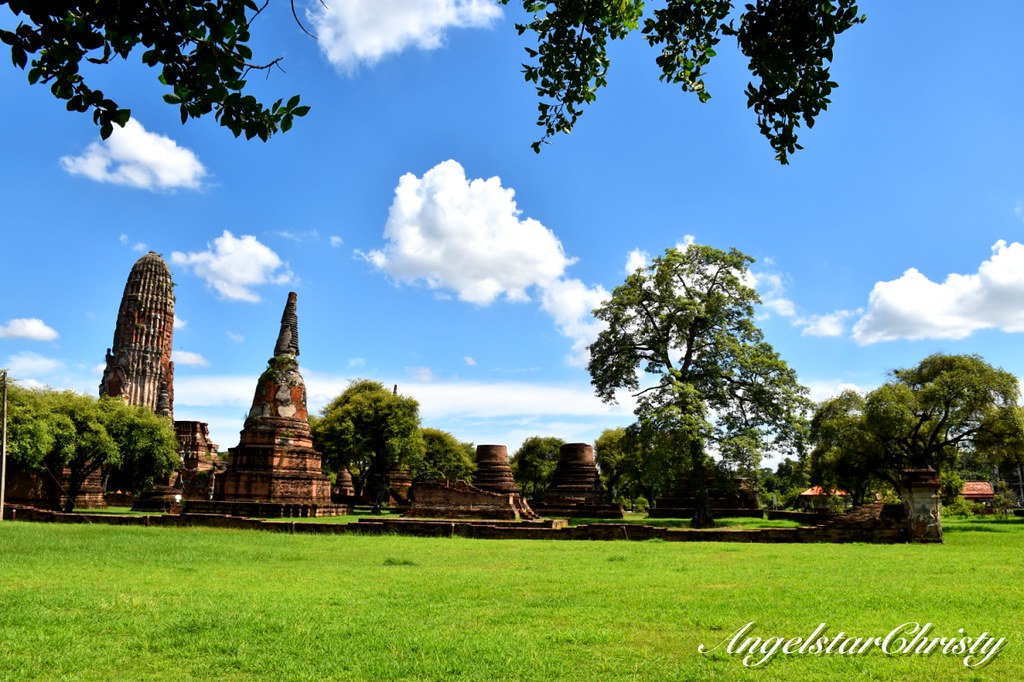
Landscape view of Wat Phra Ram
2. Wat (Phra) Mahathat

Most famous for the iconic Buddha head statue entwined in the tree roots, this is another not to be missed landmark in Ayutthaya. Besides the photographic image of the statue, Wat Mahathat is also hailed as one of the most important temples in the city, as well as being one of the oldest. Its name translates to Monastery of the Great Relic.
There is also an interesting trivia associated with the beginnings of this landmark, involving again the two kings mentioned earlier, who were connected to the establishment of Wat Phra Ram and the historical context of the city of Ayutthaya; King Ramasuen and King Borommaracha I. Earlier with Wat Phra Ram, it was King Ramasuen who ordered for its construction on his late father's cremation grounds where the completion of the works were seen through by his successor King Borommaracha I following his (Ramasuen's) abdication.
Here with Wat Mahathat, it is the inverse, where King Borommaracha I erected the temple which was then followed through by his nephew, King Ramasuen (whom he forced his abdication) upon his second ascension to the throne following his uncle's death.
Wat Phra Mahathat is symbolic to Ayutthaya and much of its significance is attributed to its status as the royal monastery due to its proximity to the Grand Palace. It also houses a number of important religious relics (Buddha) and some sacred artefacts which were believed to be taken from Angkor during King Borommaracha II's attack on the kingdom in 1431. These include images of oxen and lion, among other mythical creatures which were then placed in this temple.
This established the temple's importance in the kingdom of Ayutthaya which is further denoted by the temple's priests being regarded as the highest authority among all the temples in the entire kingdom.
The temple's resources had attracted its fair share of gravediggers interested in making a fortune for themselves, though the complexity of the architecture had also trapped these fortune hunters to their own demise within its realm, which some associate with the mythical powers of the temple's own guardians.
The statue of the Buddha head embedded within the tree may be the touristy highlight, but the true charm of the temple is beyond the single statue which is surrounded by photography enthusiasts. I recommend to spend more time examining the architecture and the culturally-infused design of the site which adheres to the ancient mathematical and astronomical calculations in conjunction with concepts deeply rooted in Hinduism.



3. Wat Phuttaisawan
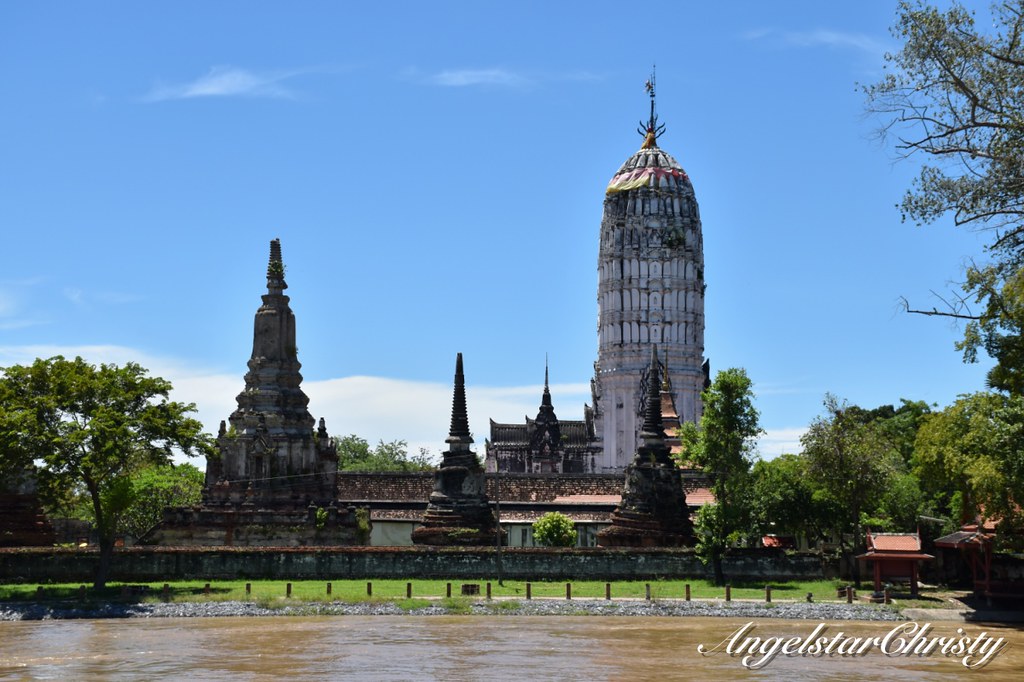
(Monastery of Buddhist Kingship - Source: History of Ayutthaya)
Another famous temple located adjacent to the Grand Palace, constructed in 1353, this is also constructed in the Khmer-styled architecture, which was largely due to the Ayutthaya's victory over the Khmers by king of Suphan then.
The temple is ordered by his younger brother, the then King Ramathibodhi I where most of the workers involved in the construction were believed to be the Khmers forcibly relocated from the Angkor kingdom to Ayutthaya.
It is also a sacred site for the religious relics and is again, one of the oldest establishments in Ayutthaya.
The site is famous for the reclining Buddha which was undergoing major renovation during my visit.
It is also believed that the spirit of King Ramathibodhi I still lingers in this monastery, based on the local superstitions.
4. Wat Lokaya Sutharam

Located directly west of the Grand Palace, this temple, famous for its giant reclining Buddha statue greeting visitors in the open land is a massive complex of ruins.
The statue was also under heavy restoration during my visit though many devotees were still flocking to pay homage on the site, where an altar has been set up for the offerings.
The reclining statue is approximately 42 meters in length and 8 meters in height, and is known as the Phra Buddha Sai Yat. Formerly enclosed, the statue is now exposed since the fall of most of the temple's establishment to its foundation level and is the main highlight of the site. It is often found with a bright orange coloured cloth wrapped around its body and many have attempted to cover the structure with gold leaves in preservation of the religious image. Interesting things to note about the statue include the vertical hand which holds up the head of the statue which differs from the conventional folded style usually seen in Early Ayutthayan and the U-Thong periods, and also the equal lengths of the toes on the statues.
While there are remains of a small chedi which is slightly hidden by the surrounding vegetation, most of the site is found in ruins but it is still worth a visit to revel in the tranquility and solemnity of the worship and in the forgotten past of what once stood on these grounds.
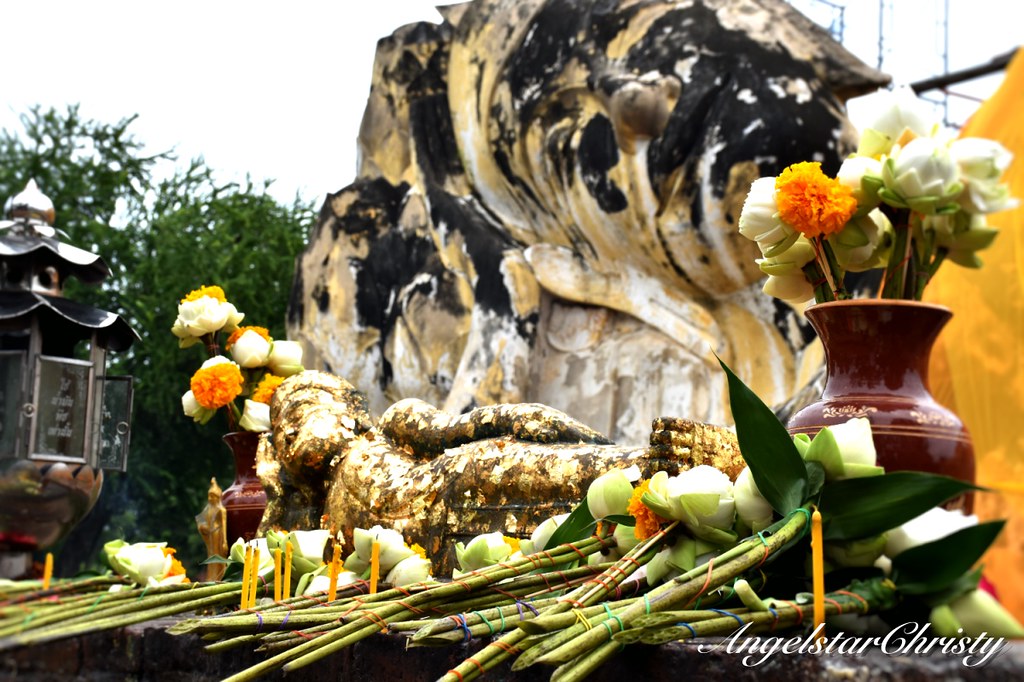
5. Wat Ratchanaburana

(Monastery of the Royal Repairs - Source: History of Ayutthaya)
One of my personal favourite is the mystical Wat Ratchanaburana, located right across the Wat Mahathat.
It is a rather quiet spot compared to its crowd-infested neighbour, and it may be due to its lacklustre appearance which pales in comparison to the familiar tones of the red in the usual Khmer architectures in the vicinity.
However, this is marked as one of the finest prangs in Ayutthaya and the temple is known as the "Temple of the Royal Restoration".
The temple, constructed in the year 1424, is intended as a memorial for two princes, who were contenders to the throne and are brothers of King Borommaracha II (ruled from 1424-1448), who was earlier known as Chao Sam Phraya or Prince Sam Phraya.
He was the youngest son of King Intharacha (1409-1424), whose death led to his two elder sons, Chao Ai Phraya, ruler of Suphan and Chao Yi Phraya, ruler of San Buri, who engaged in a battle for the throne and ended up tragically killing each other.
This led to the youngest prince, Chao Sam Phraya, ruler of Chainat which was on the northern part of Ayutthaya to be called upon, or rather, invited to ascend the throne as King Borommaracha II where he then erected this temple in memory of his deceased brothers.
There are also mysticism surrounding this temple, which has been linked to ominous beliefs that most kings do not visit this temple as there was a prophecy where the first king who steps in would end up in death. The historical chronicles of Ayutthaya also records the ominous arrival of a crow which perched on the finial of the main prang and is linked to the defeat of the kingdom to Burma thereafter.

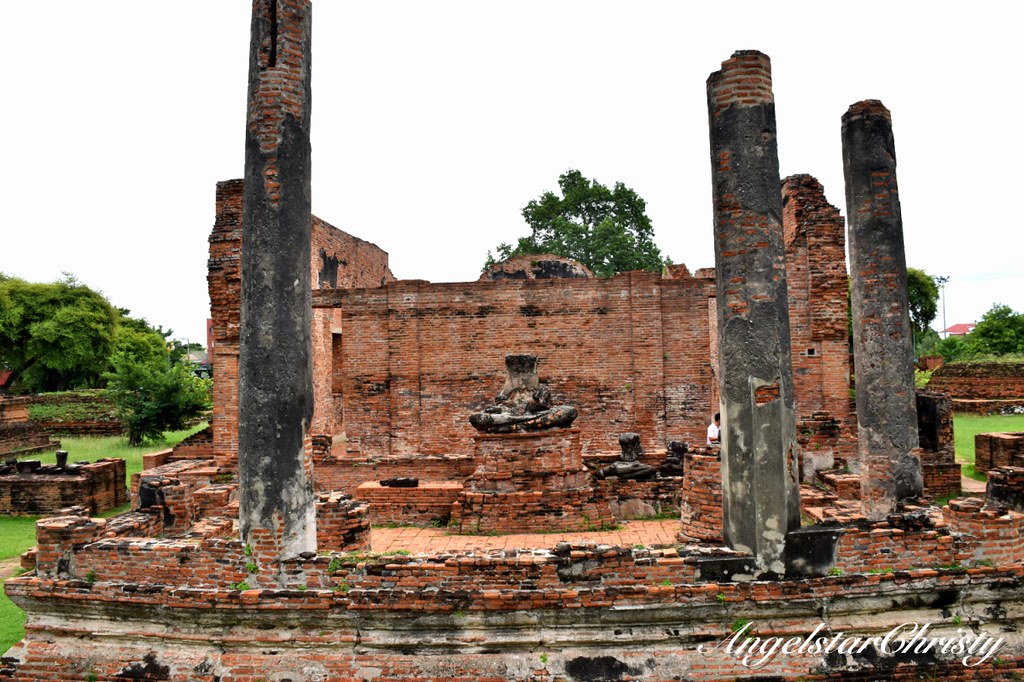
6. Wat Phra Si Sanphet

(Temple of the Holy, Splendid Omniscient - Source: Wikipedia)
This was the most important temple in the ancient Ayutthaya kingdom, the Temple of the Buddha Si Sanphet. It is located on the royal palace grounds and is the royal monastery where only the royals, or the kings visit and the temple is not inhabited by the clergy.
Its importance is similar to Wat Mahathat, which is believed to be due to the housing of the sacred items from the conquest of Angkor by King Borommaracha II in both temples.
The temple is believed to be established in the year 1350 by Prince U-Thong, who ordered for the construction of a new royal palace and upon its completion the following year, in 1351, he ascended the throne as the first ruler of Ayutthaya, King Ramathibodhi I and named Ayutthaya as the kingdom's capital. It was King Borom Trailokanat, the eighth king of Ayutthaya, who, upon ordering for a new palace north of the site, converted the former palace to a religious site in 1448.
The monastery is famous for its three bell-shaped chedis which are its trademarks, with two of the chedis constructed by King Ramathibodhi II in honour of his late father and elder brother, King Borom Trailokanat (1448-1488) and King Borommaracha III (1488-1491), his first priority upon his ascension to the throne in 1491. The king also erected a gigantic image of Buddha on this site which was recorded as one of the largest and finest standing image of Buddha ever in existence, and it was named as the Phra Sri Sanphetdayan. It is also the main highlight as the object of worship in the main chapel. The temple is said to have gotten its name from this statue though the sources are unclear on whether it is the statue which got its name from the temple or the other way round.
Sadly, the temple suffered massive destruction during the Burmese invasion in 1767, where only the three chedis remain of its original establishment.
The third chedi was built by King Borommaracha IV (1529-1533), for King Ramathibodhi II's remains.
Being the royal monastery, Wat Phra Si Sanphet is an exclusive location for the kings of Ayutthaya and it was also in the historical records of The Royal Chronicles of Ayutthaya that the site housed the remains and bone relics of the kingdom's rulers, namely King Suthammaracha (1656), King Narai (1656-1688), King Phetracha (1688-1703), King Borommakor (1733-1758), which are in the Royal Wihan of the monastery. Besides the kings, the site also holds the remains (ashes) of the royal families in a small chedi on the grounds.
This is a majestic site which is quite enthralling to visit, with its history and also the standing stupas which remained unfazed by the passing of time.
The holy temple is also the inspiration for the famous Temple of the Emerald Buddha in Bangkok, also known as Wat Phra Kaeo.


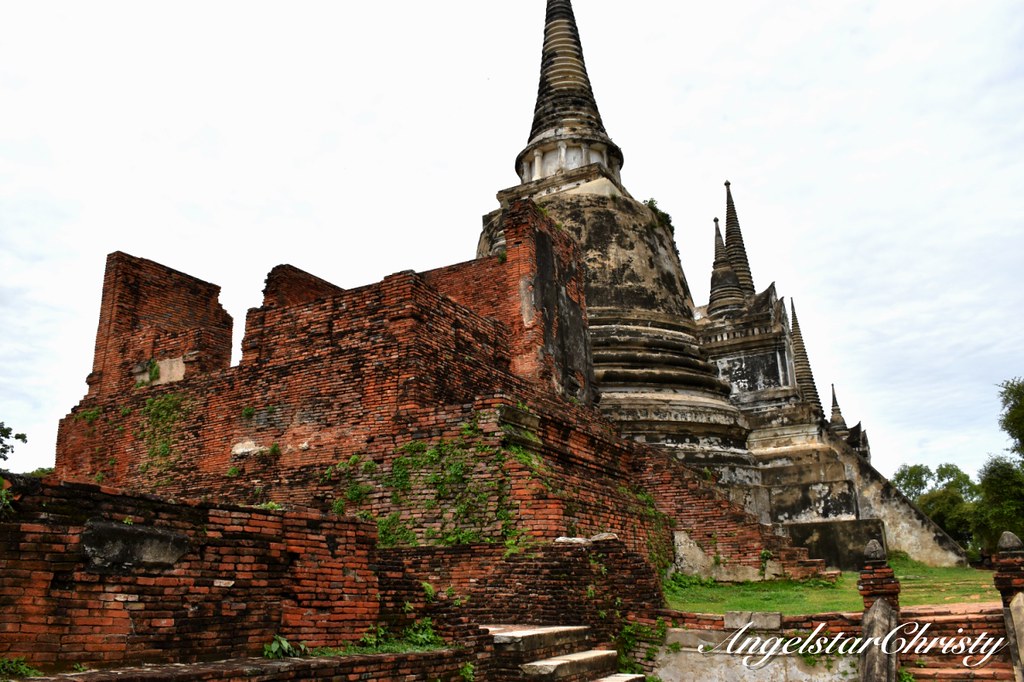
7. Wat Chaiwattharanam
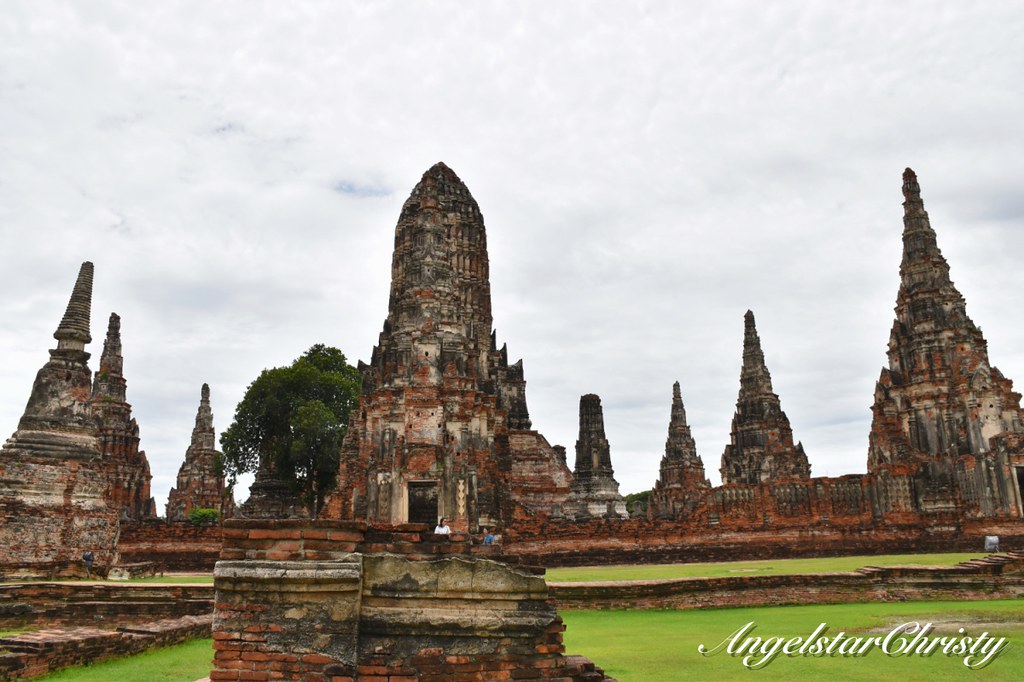
(Monastery of the Temple for the Advancement of Victory - Source: History of Ayutthaya)
This site is just like an ancient kingdom conjured from the past before my eyes, with its spectacular ruins spread across the vast land. It makes me feel as though I have taken a trip back to the past, standing among its magnificence and it is no wonder this is also dubbed as the most majestic site in Ayutthaya, decked in its grandeur.
The temple is definitely one of Ayutthaya's finest, if not the best, and its resplendence is a toiling effort which spanned for two decades in construction. Its establishment is in honour of King Prasat Thong's (1629-1656) late foster mother, though it was also to exemplify the king's Buddhist merits, with historical sources speculating it as being politically driven at the same time. Similar to Wat Phra Si Sanphet, this is also a royal sanctuary since King Prasat Thong's reign where most of the royal families and kings of Ayutthaya would visit for official events, royal funerals and also holy pilgrimages. The site also holds the remains of the royal families.
The temple is also seen as the guarding fort against the Burmese attacks from 1764-1767, the last Burmese war against Ayutthaya, evident in the remains of the cannons and also signs of restructured walls which are indications of the kingdom's defence against their invaders. It is also symbolic of the influence of Buddhism on Ayutthaya kingdom and its splendour is often compared to Angkor Wat, though it is still minuscule in comparison to the famous heritage site in Cambodia.




Most of the temples are located within the vicinity of the Ayutthaya Historical Park, which is located on the west bank of the Chao Phraya River, with the exception of Wat Putthaisawan, and they have all been registered as national heritage sites.
There are many more Wat(s) in Ayutthaya which are worth visiting but if time is a concern, these are the ones to consider as they are also the main highlights and easily accessible once one is in the enclosed area of the ancient capital's historical park.
I definitely look forward to another trip to explore most, if not all of the Wat(s) in this beautiful city.
Sources:
Wikipedia
History of Ayutthaya - a comprehensive site to read about the history of these temples and of Ayutthaya in general.
Tips and more information:
Recommended time to visit all the Wat(s) above: 2-3 days
Allocate approximately 30 minutes to an hour per site, but 2-3 hours for the larger sites such as Wat Phra Si Sanphet and Wat Chaiwattharanam.
Rushing through the sites would be hectic and you may not get to enjoy the historic value of the sites.
Admission fees: It may vary but generally are at 50 Baht (at time of post), though please check before visiting.
Transportation: Accessible via taxis or tuk-tuks (prices vary, so it depends on your negotiation skills).
If you plan to cover more Wat(s), you may want to consider hiring a guide or booking a driver for the day.
Opening Hours: Most of the temples are open from 8am until 5pm, but do check again before visiting.
*Wear good/comfortable walking shoes, light and loose clothing, with an extra shirt if you tend to sweat a lot, an umbrella, bottled water and camera.
*You can also bring a portable fan to cool yourself.
The weather in Thailand can be rather hot and humid, therefore please be prepared especially when visiting these sites.
You do not have to agree with me.
Art Direction and Photography Styling by Me.
Photos/Videos all belong to me and are copyrighted.
Please kindly ask for permission if you need to use any of my images.
Check out my Pinterest @Angelstarc
Follow me on my live updates on my life, happening on SNAPCHAT @angelstarchrist



2 comments
Natural burials, which can incorporate Buddhist funeral rites, are increasingly popular as an environmentally-friendly return to the earth that are compatible with these beliefs. cherishmemorialsfuneral.com
ReplyDeleteFuneral photographs and film footage taken by Brisbane videographer can be combined with favourite songs and music to create a vivid and enjoyable focus for the recollection of happy memories.
ReplyDelete